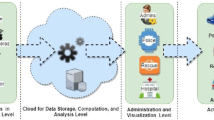Abstract
Information security is perceived as an important and vital aspect for the survival of any business. Preserving user identity and limiting the access of web resources only to the humans and restricting ‘bots’ is an ever challenging area of study. With the increase in computing power and development of newer approaches towards circumvention and reverse-engineering, the recognition gap present between the machines and the humans is said to be decreasing. Turing test and its modified versions are in place to deal with such problems and ways to resolve them by developing complex algorithms for bot prevention systems like CAPTCHA (Completely Automated Public Turing test to tell Computers and Humans Apart). This paper will deal with the use of “Machine Vision” for judging the ability of the machines to compete with humans in breaking sequences of security systems like CAPTCHA. Reverse Turing test will be put to practise here. Complex image recognition technologies and novel approaches towards using Human interactive proofs (HIP) are discussed. The progress of Turing test over the past 60 years has been paid due attention at the end. After all this experimentation, it can be said that the current machine vision is quite poor and is far worse than it is expected to be.



Similar content being viewed by others
Notes
Bots are software applications that run automated tasks over the Internet at a much higher rate than would be possible for a human alone.
Joint photographic experts group (JPEG), Graphics interchange format (GIF) and Portable network graphics (PNG) are digital image formats.
GIMPY is a reliable system. It was originally built for Yahoo! to keep bots out of their chat rooms, to prevent scripts from obtaining an excessive number of their e-mail addresses, and to prevent computer programs from publishing classified ads. It is not an acronym.
The reduction in the inherent optimum detail and reduction in quality caused by unavoidable factors not associated with the sensor system lead to image degradation. Image distortion is the alteration of the original shape (or other characteristic) of detail in the image or the entire image.
Set of human information or machine data can be considered a signal.
References
Antonatos EA (2006) Enhanced CAPTCHAs: using animation to tell humans and computers apart. Int Fed Inform Process 97–108
Baird HS, Popat K (2002) Human interactive proofs and document image analysis. In: Document analysis systems V-lecture notes in computer science (pp. 531–537). Springer, Berlin
Baird HS, Coates AL, Fateman RJ (2001) PessimalPrint: a reverse Turing test. In: Proceedings of the 6th international conference on document analysis and recognition, 1154–1158
Baird HS, Moll MA, Wang S-Y (2005) ScatterType: a legible but hard-to-segment CAPTCHA. In: Proceedings of the 2005 eighth international conference on document analysis and recognition (ICDAR’05). IEEE Computer Society
Chanathip N, Matthew D (2004) Mitigating dictionary attacks with text-graphics character CAPTCHAs. In: TENCON 2004 conference proceedings 2004
Chellapilla K, Simard P (2004) Using machine learning to break visual human interaction proofs (HIPs). Neural information processing systems (NIPS’2004). MIT Press, Cambridge
Goodman J, Rounthwaite R (2004). Stopping outgoing spam. In: Proceedings of the 5th ACM conference on electronic commerce. New York
Lillibridge MD, Adabi M, Bharat K, Broder A (2001) Patent No. US Patent 6,195,698. United States
Mori G, Malik J (2003) Recognizing objects in adversarial clutter: breaking a visual CAPTCHA. Proc Comp Vis Pattern Rec (CVPR) Conf IEEE Comput Soc 1:I-134–I-141
Nagy G (1996) Modern optical character recognition. The Froehlich/Kent Encycl Telecommun 11:473–531
Pavlidis T (2000) Thirty years at the pattern recognition front. King-Sun Fu prize lecture 11th ICPR. Barcelona, Spain
Rice SV, Jenkins FR, Nartker TA (1996) The fifth annual test of OCR accuracy. ISRI TR-96-01, Las Vegas
Rice SV, Nagy G, Nartker TA (1999) OCR: an illustrated guide to the frontier. Kluwer, Amsterdam
Turing A (1950) Computing machinery and intelligence. Mind 59(236):433–460
Von Ahn L, Blum M, Langford J (2000) Completely automatic public Turing test to tell computers and humans apart. The CAPTCHA Project, www.captcha.net, Dept. of Computer Science, Carnegie-Mellon Univ
Von Ahn L, Blum M, Langford J (2008) reCAPTCHA: human-based character recognition via web security measures. Science 321:1465–1486
Author information
Authors and Affiliations
Corresponding author
Rights and permissions
About this article
Cite this article
Putchala, S., Agarwal, N. Machine vision: an aid in reverse Turing test. AI & Soc 26, 95–101 (2011). https://doi.org/10.1007/s00146-009-0231-4
Received:
Accepted:
Published:
Issue Date:
DOI: https://doi.org/10.1007/s00146-009-0231-4




